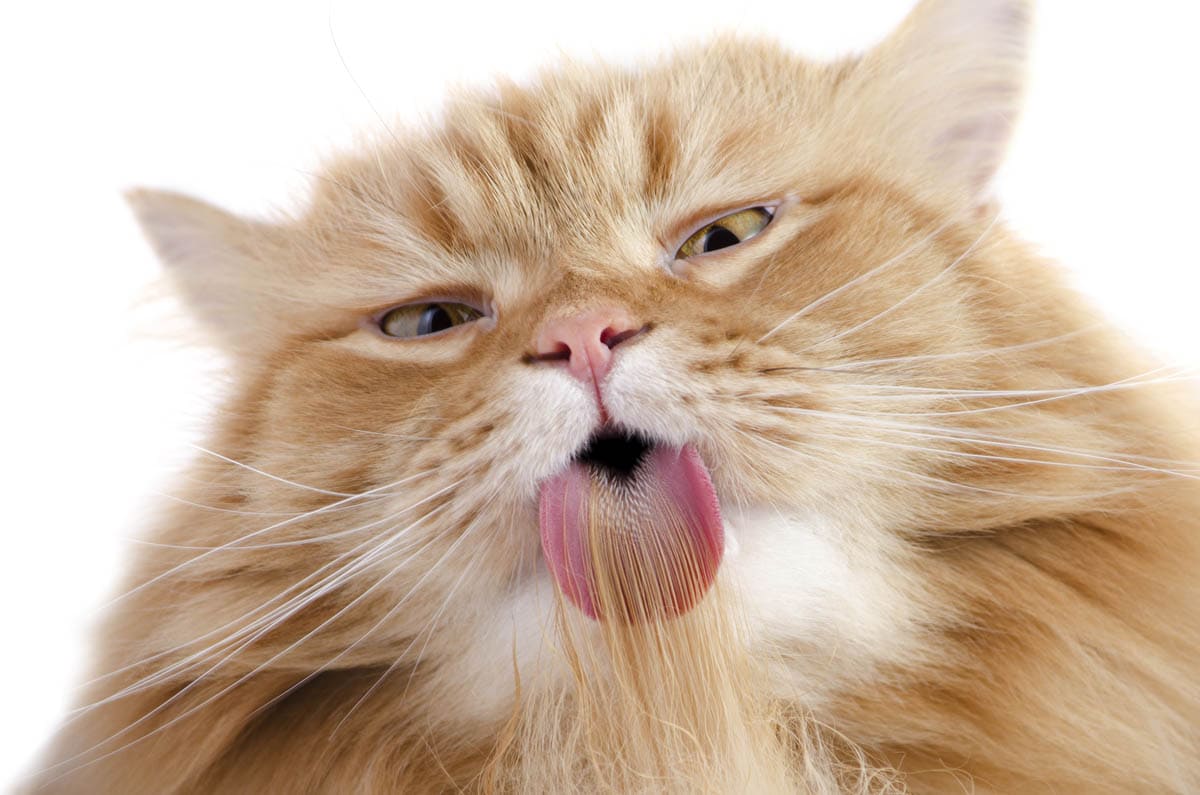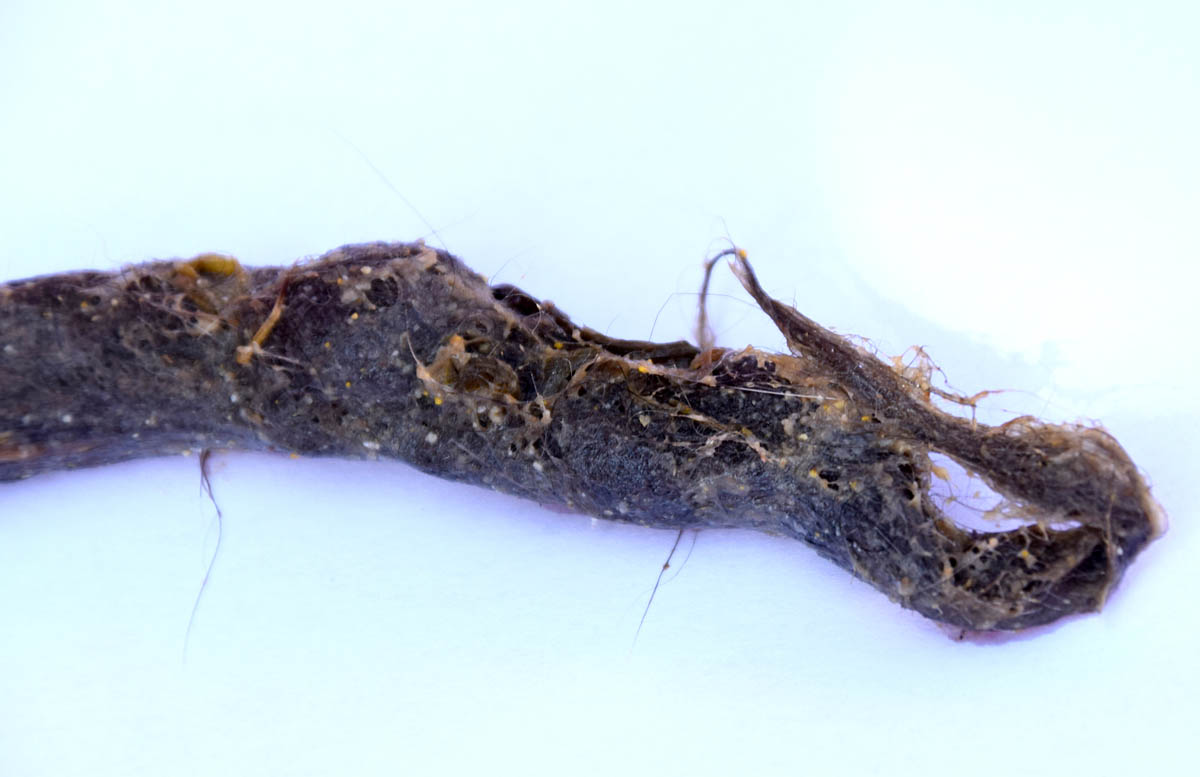What are hairballs?
Also known as trichobezoars (pronounced trike-oh-bee-zohr), hairballs are balls of hair that are ingested during grooming and later vomited from the stomach.
What causes cats to produce hairballs?
Cats spend 24% of their awake time grooming; during this process, the cat ingests loose hair. The tongue of the cat has backward-facing barbs which encourage the ingestion of hair when the cat grooms.

More often than not, these hairs pass through the digestive tract and pass out of the body without incident. It is thought that hairballs occur when there is either an excess of hair being ingested or gastric motility disorders.
Increased ingestion of fur due to pruritic skin diseases such as fleas or food allergy and overgrooming due to pain or obsessive-compulsive disorder can also lead to hairballs.
There is an increasing focus on underlying diseases, which can lead to hairballs. Gastric motility disorders can slow down the transit of food (and hair) through the GI tract. Inflammatory bowel disease and lymphoma can both create a thickening of the intestines and slow down transit time.
Are hairballs dangerous?
In most cases no, but if your cat is frequently suffering from hairballs, it can be an indication that the hair in the digestive system has impacted, which can cause a partial or complete gastrointestinal obstruction. This is life-threatening and requires immediate veterinary attention.
Vomiting into the nasopharynx can lead to sudden-onset sneezing, retching, bad breath and nasal discharge.
Symptoms
The main symptom your cat has is when he vomits up a hairball. These are typically tubular, brown and predominantly made up of cat hair, but can also contain other material from the stomach. The hairball will be accompanied by coughing, hacking or gagging.
If the hairball causes a gastrointestinal obstruction, the following symptoms can develop, clinical signs include:
- Constipation or diarrhea
- Vomiting
- Loss of appetite (anorexia)
- Swollen abdomen
- Lethargy
Prevention
Regular grooming:
This will reduce the amount of hair ingested and is especially important if the cat is longhaired or a thick coat.
Grow some catnip or cat grass:
Eating catnip or cat grass can increase fibre, which in turn helps with the passage of hairballs.
Increase fibre or lubricants:
- Add a teaspoon of canned or boiled pumpkin to the food.
- Metamucil is a bulk-forming laxative that is prescribed as off-label. Add 1/2 teaspoon to water and mix in with the cat’s food.
- A small amount of Vaseline (petroleum jelly) given to your cat can also help with the passage of hairballs. Add 1/2 tablespoon to your cat’s food (obviously canned food is required). If your cat refuses to eat the food, you can smear the same amount onto his paw. Be warned; this can be messy. If your cat is prone to hairballs, try adding Vaseline 2-3 times a week. An alternative to Vaseline is to add 1-2 teaspoons butter to the diet, at the same frequency.
Diligent parasite control:
Regularly treat all household cats for fleas and worms. Many cats can develop flea allergy dermatitis, which is an allergic reaction to the protein in flea saliva, which causes irritation and excessive grooming.
Treatment
The goal of treatment is to address the underlying cause if one is found as well as help the hairball pass out of the cat.
Hairball diet:
Where an underlying cause has been ruled out, commercial hairball diets can reduce the incidence of hairballs by increasing levels of insoluble fibre which promotes gastric motility and gastric emptying. Hairball diets also improve skin and hair conditions, which in turn reduces shedding.
Gastric lubricants:
Oil-based products help lubricate the digestive tract and aid the movement of the hairball to the bowel.
Medical management:
Medications to promote effective gastric emptying such as metoclopramide, cisapride and ranitidine. Cisapride and ranitidine are not licensed for use in cats but can be prescribed as an extra-label drug by veterinarians.

